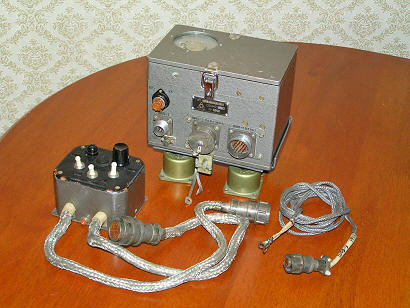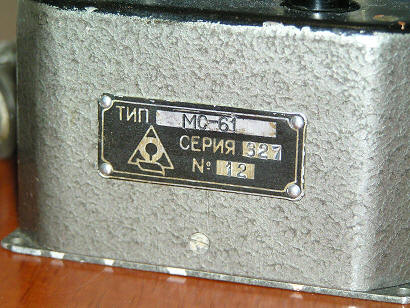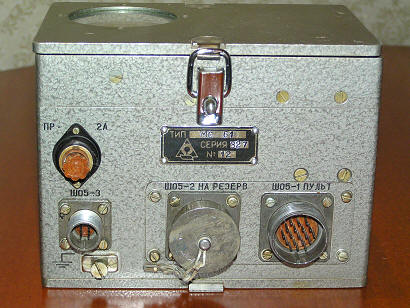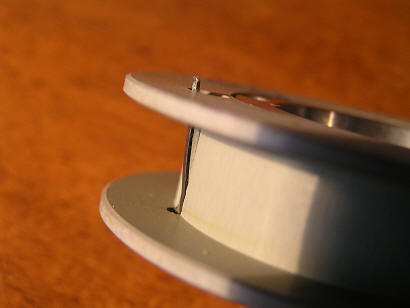|
 





Flight Recorder MS-61

Used Google
translator
MS-61 (In Russian МС-61) The
aircraft recorder is designed for recording speech from
a receiver or laryngophones. The design is very old, but
successful, and similar modernized tape recorders P-503B
(П-503Б) still produce in Nizhny
Novgorod.
Using a wire as a magnetic carrier allows a long
recording time of about 5.5 hours with a wire diameter
of 0.05 mm. For more efficient use of this time there is
an autorun mode by the presence of an input signal. The
device is controlled from the console, which contains
the necessary switches and a brightness control for the
backlight. Dimensions without cushion support 160 x 132
x 160 mm., Weight 4 kg. Power 27 volts DC. The speed of
the wire is variable, 145 - 195 mm / sec. There is also
an auto-stop, the construction of which is described
below, and a wire break detector. When the wire breaks,
a backup recorder is included, for which there is an
appropriate connector.
The case of the
recorder itself is very durable, cast of aluminum alloy,
but it was also planned to install it in an armored
casing. More detailed information about the parameters
of the tape recorder can be found in the instructions
that can be easily found on the Internet, for example
here. This tape recorder naturally only records, and
for playback is intended ground MN-61
(МН-61) recorder, analogue of which P-504N (П-504Н)
is also produced so far.
Сервис онлайн-записи на собственном Telegram-боте
Попробуйте сервис онлайн-записи VisitTime на основе вашего собственного Telegram-бота:
— Разгрузит мастера, специалиста или компанию;
— Позволит гибко управлять расписанием и загрузкой;
— Разошлет оповещения о новых услугах или акциях;
— Позволит принять оплату на карту/кошелек/счет;
— Позволит записываться на групповые и персональные посещения;
— Поможет получить от клиента отзывы о визите к вам;
— Включает в себя сервис чаевых.
Для новых пользователей первый месяц бесплатно.
Зарегистрироваться в сервисе
Photos can be enlarged

 

My set of tape recorder with remote
control has the same serial numbers. It was made in
1969. The dimensions of the control panel are 92 x 75 x
78 mm.


The power cord has wires marked with
polarity. Through the round window in the cover, you can
see the rotation of the supply coil

 
 

Between the heads is a wire break
detector. The wire tension keeps the sensor lever in an
upright position. When the wire breaks, the lever is
released and the sensor switch is triggered.


The recording and erasing heads are
mounted on a plate that moves up and down, laying the
wire on the spool in even rows.


The photo below clearly shows the coil
springs for fixing the coils


Hitchhiking works according to the old
proven principle. A flat spring is attached to the coil
drum, which is pressed with a wire. When the wire on the
coil ends, the spring is released and touches the
annular contact located under the coil, after which the
auto-stop circuit turns off the engine. The photo above
shows the ring contacts of the auto-stop. The photo
below shows the design of coils with a spring.

 

Before releasing the recorder, I
certainly photographed the factory seals


Inside, everything is done in the usual
style for the Soviet defense industry, the printed
circuit board is covered with a thick layer of lacquer,
on all the details of the seal of military acceptance.
Workmanship is good, such a design should normally
tolerate vibration and overload.

 
 
 

Despite the seemingly
archaic method of recording on wire, analogous wire
recorders P-503B (П-503Б) still produce in Nizhny
Novgorod. Photos from the
manufacturer's website



|

![]()
![]()
![]()
![]()
![]()
![]()
![]()


































